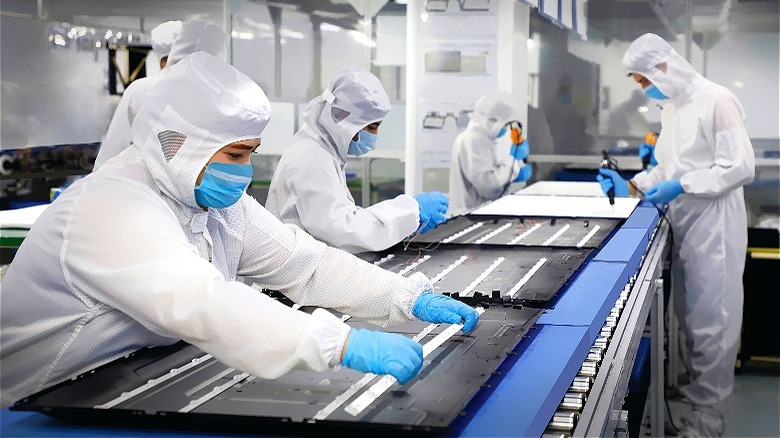TVs: The One Item That Seems To Defy Inflation
American consumers who shop at the grocery store or attempt a larger purchase, like a home or a new car, know all too well that inflation in the United States has been raging out of control in recent years. Sure, the rate of price increases is moderating of late, as the Federal Reserve's higher interest rate policy takes hold. (By the way, here's what the Fed's efforts to achieve a soft landing means for the economy.) But the massive cumulative price hikes post-COVID can't simply be put back in the bottle. This said, if there's any comfort to weary shoppers, know that Americans' favorite form of entertainment — the television — is one of few products capable of defying the effects of inflation.
Between the years 2000 and 2022, the cost of things like housing, college, and medical care (i.e., hospital visits) have risen by a staggering 80% to more than 200%, according to data provided by the Bureau of Labor Statistics, as reported by the American Enterprise Institute. Yet, during that same time period, the price of televisions dropped by more than 90%. Let's take a deeper look at what's driving this anomaly.
Manufacturing costs are falling
The steady low prices of modern televisions in the face of inflation is perhaps perplexing to some when you consider they're often much less expensive than a smaller device, such as an iPad or other tablet. However, that's because a TV is much simpler, without processors, rechargeable batteries, or other expensive components. A TV is mostly just a screen and the cost of those screens (really LED panels) is lower than ever from third-party suppliers — the result of more efficient manufacturing processes.
In particular, TV manufacturers are more skilled today at cutting individual screens from a larger (sometimes over 100 square feet) sheet of glass called the "mother glass." Nowadays, more screens can be cut from the mother glass with less waste. Further, an abundance of low-priced screens from third-party vendors also serves to foster competition. Newer brands, such as TCL and HiSense, both hailing from China, have a low barrier to entry into the market and typically vie against established brands like Samsung and Sony by offering lower prices. In turn, that causes legacy brands to also lower their prices, which benefits the consumer.
Your TV is watching you
However, besides more efficient manufacturing today and increased competition between brands, there's a more sinister reason behind inflation-defying TV prices. It's the collection of personal data, which advertisers are willing to pay for. Nearly all modern TVs are smart TVs with native software for streaming content from sources like Netflix, YouTube (discover if YouTube TV is worth the price), and others.
According to Nielsen's annual marketing report for 2023, Americans in 2022 watched 19 million years worth of streaming content. Similar to how search engines track your online activity, smart TVs keep tabs on you: on what you're watching, when, and for how long. That viewing data is then sold to tracking companies, who partner with advertisers. (See how much pharmaceutical companies spend on TV ads.)
Sharing data about consumer viewing habits allow TV manufacturers to collect a revenue stream after the initial purchase. Therefore, they're willing to sell the device less expensively, sometimes at cost — meaning, with no profit whatsoever. So yes, your TV is actually watching you while you're watching it. If that thought creeps you out, you may be able to disable monitoring using the TV's security settings.
Not all televisions are cheap
Finally, shoppers should know that not all televisions are virtually being given away. Certain TVs are still fairly expensive in a relative sense. While it's definitely possible to score a 55-inch flatscreen for less than $250 these days, expect to pay considerably more for top-of-the-line models. That premium distinction is defined by features like OLED (organic light-emitting diode), in which each pixel emits its own light, which produces a superior picture quality. Ditto for included add-ons like sound bars.
As well, a currently popular and pricey Samsung model is "The Frame" (featured above). Like the name implies, The Frame displays your favorite artwork in 4k resolution when the television isn't in use and has a snazzy border that looks like, well, an upscale picture frame. What's remarkable is that even top-shelf televisions like The Frame (cost $1,999 at Walmart) are still typically cheaper than a measly 15-inch TV from the year 1973, which cost $379.95 50 years ago, or $2,751 in (June) 2024 dollars.



